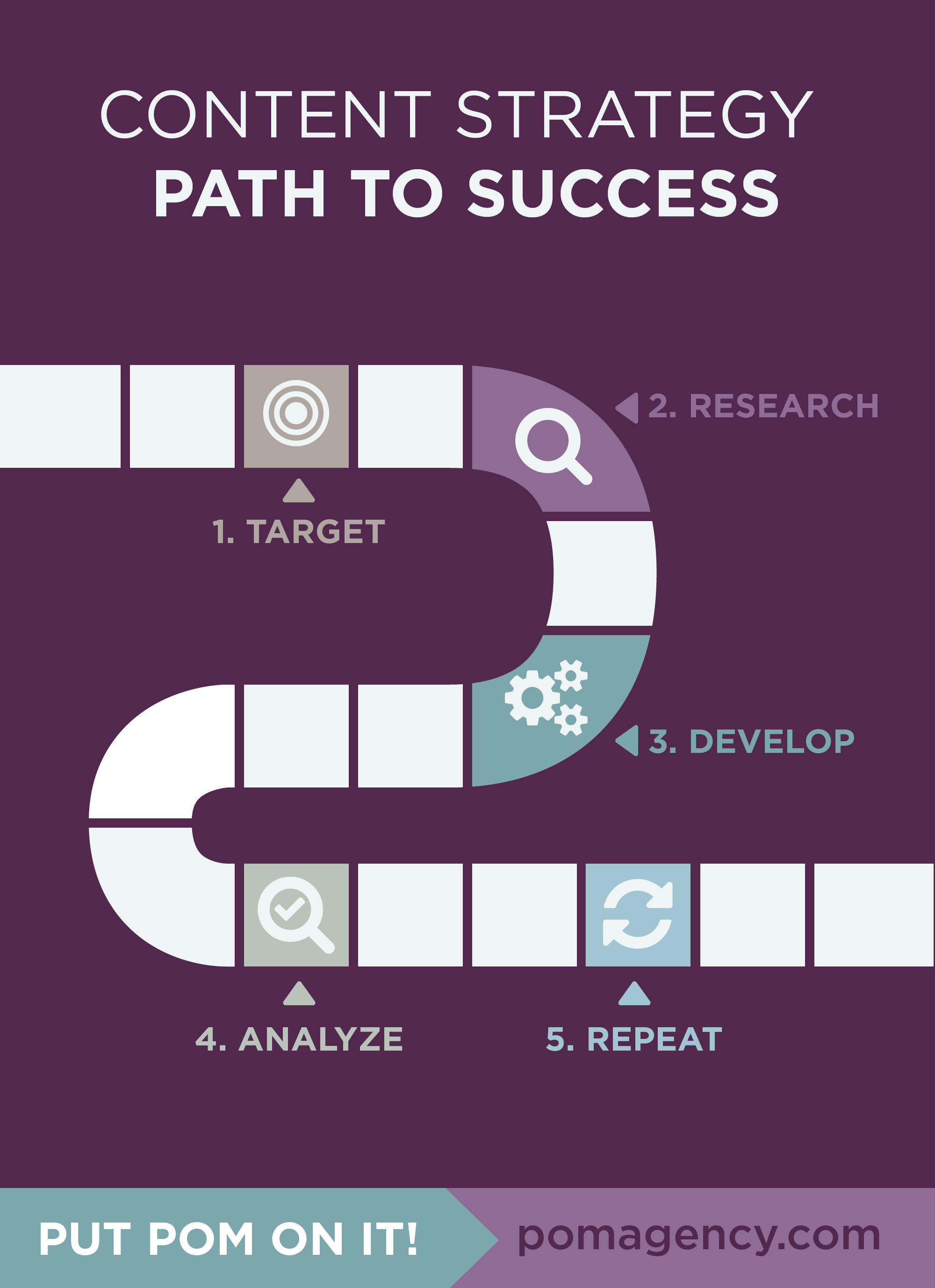Developing a Content Strategy that Will Take Your Online Marketing to the Next Level
In my last Random Thoughts blog post, I talked about how ongoing, consistent effort is required to nurture your website so that it performs how you need it to. You can’t build a site and then just let it roll – you’ve got to keep working on it, improving it and responding to change. A huge part of this can be accomplished by developing a content strategy.
Developing new content can be overwhelming. From blog posts to e-books to site pages, there are endless opportunities for content creation. It even goes beyond your site and into the social media world or writing for other publications to bring readers back to your site. Plus, who’s going to do all that writing and planning?
For the Pom team, writing our JumpStart blog series and then designing and launching our new e-book, How to Make Your B2B Marketing Not Suck, were two (big) pieces of our content strategy puzzle. So how did we decide to do this? What led us to develop these specific pieces? And how did we get it done?
Let me take you down the path we traveled to help you pull together your own content strategy

1. Target
Figure out who you’re targeting with your new content. In other words, go back to those personas you’ve developed (no clue what I’m talking about? Check this post out.) and think about creating content for each persona type.
2. Research
Once you know who you’re developing content for, figure out what interests them or what kinds of questions they’re asking. Brainstorm ideas for how to help this specific audience. For our e-book, we pictured all of those overwhelmed marketing managers who have so many balls in the air that they don’t know where to start. Then we thought about what kind of content could be helpful to them.
3. Develop
Now it’s time to get writing. We decided to develop an e-book because the topic we wanted to address was so huge. An e-book allowed us to write in depth on the topic and to provide helpful tools in the form of worksheets. If the problem was smaller, a blog post may suffice. Or maybe just a single worksheet. Figure out how to best convey the information you want to share, then gather the right people to get it done.
Often, development of content is where many people get hung up. Maybe the expert on the subject isn’t a writer, or perhaps people won’t commit the time you need. This is an essential part of developing a content strategy – figuring out how exactly you’ll execute. Break it down and figure out how the essential team members can fit the work into their schedules, and make it a priority.
4. Analyze
Once you’ve posted your new content, analyze its performance. Whether that’s by tracking visits to a blog post via Google Analytics or through form fill-outs or even through new leads, see what content is performing best for you. Then, figure out how to replicate that performance. Is it the writing style? The use of good imagery? Did the topic really resonate? Apply this to your future content plans.
5. Repeat
Publishing one awesome blog post is a great start, but it’s not going to get you very far. Consistency is key when it comes to content. Figure out what schedule works for the team you have, then follow through. Develop a content calendar a few months ahead of time to allow you to work ahead and bank content.
And if you just don’t have the capacity to get it done, look outside for help. At Pom, we not only write content and develop supporting graphics for our clients, but we also come up with a robust strategy that fits in with your overall marketing plans.



